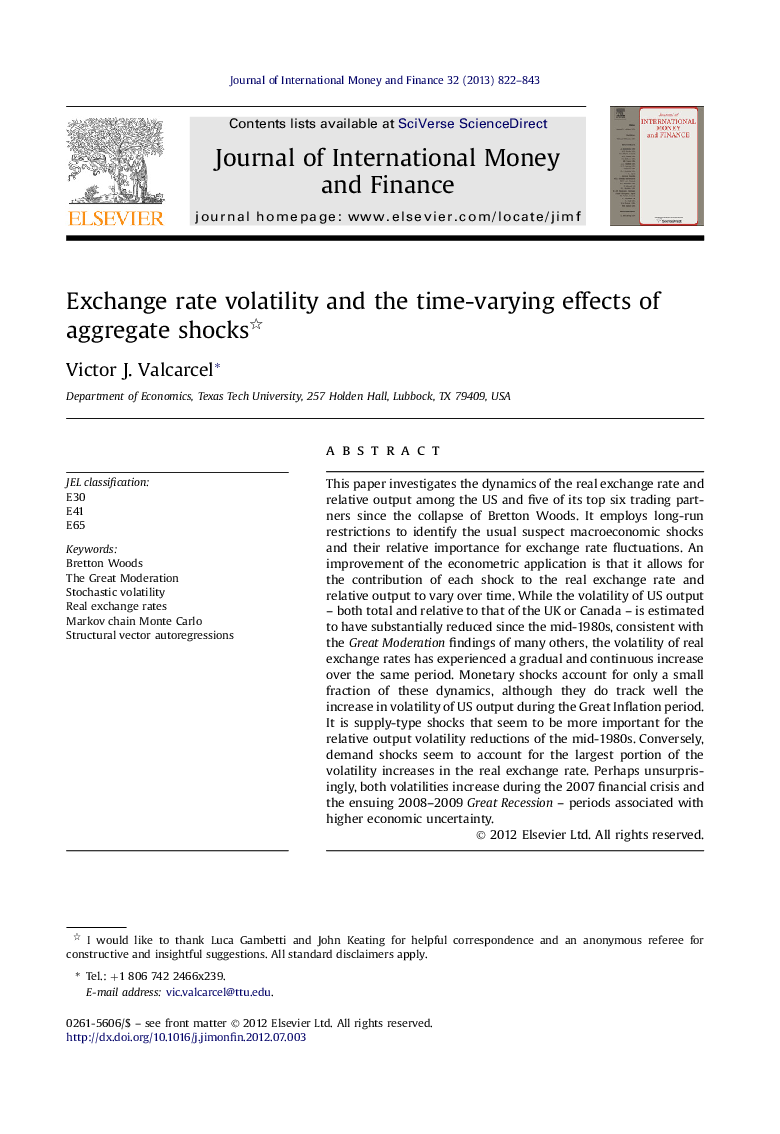ترجمه فارسی عنوان مقاله
نوسانات نرخ ارز و اثرات شوکهای کل متغیر با زمان
عنوان انگلیسی
Exchange rate volatility and the time-varying effects of aggregate shocks ☆
| کد مقاله | سال انتشار | تعداد صفحات مقاله انگلیسی |
|---|---|---|
| 44754 | 2013 | 22 صفحه PDF |
منبع

Publisher : Elsevier - Science Direct (الزویر - ساینس دایرکت)
Journal : Journal of International Money and Finance, Volume 32, February 2013, Pages 822–843
ترجمه کلمات کلیدی
برتون وودز - اعتدال بزرگ - نوسانات تصادفی - نرخ ارز واقعی - زنجیره مارکوف مونت کارلو - برداری ساختاری
کلمات کلیدی انگلیسی
E30; E41; E65Bretton Woods; The Great Moderation; Stochastic volatility; Real exchange rates; Markov chain Monte Carlo; Structural vector autoregressions

